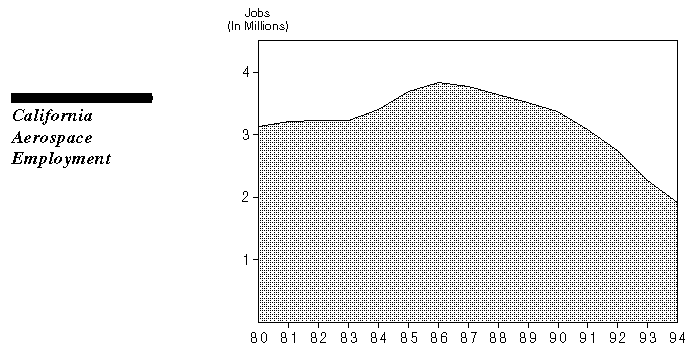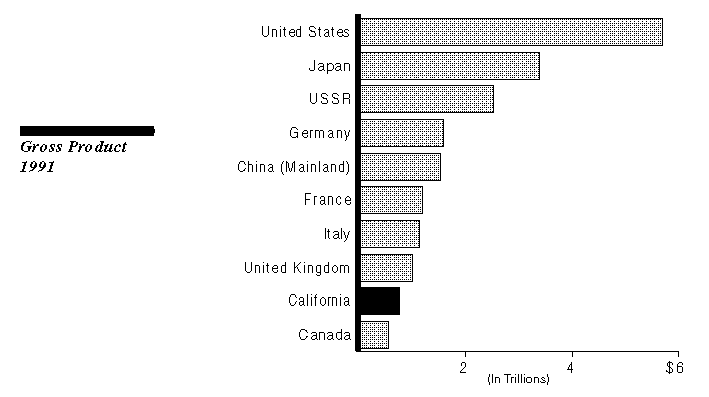
 Legislative Analyst's Office
Legislative Analyst's Office
The best way to measure the California economy's overall size and compare it to that of other nations and states is to look at California's gross state product (GSP). Gross product includes the value of market transactions, but excludes such things as illegal activities and the "underground" economy.
The figure below shows that California ranks among the world's ten largest economies. Its gross product currently is over $800 billion. This is larger than all but eight nations (including the former USSR), $200 billion more than Canada, and 60 percent more than the next largest state, New York.

Given that California's economy is one of the world's largest, it is only natural that it comprises a large share of the nation's economy.
The exact share varies from year-to-year and depends on the particular economic measure used, such as output, income, or employment. Personal income is the broadest measure for which reliable current data are readily available.
Based on personal income, the figure shows that California's share of the nation's economy in 1994 is about 12 percent, or roughly one-eighth. California's share increased steadily throughout the 1980s and most of the 1970s, hitting a peak of over 13 percent in 1990. Since then, however, California's share has fallen somewhat, reflecting the state's recent severe recession and sluggish economic recovery.
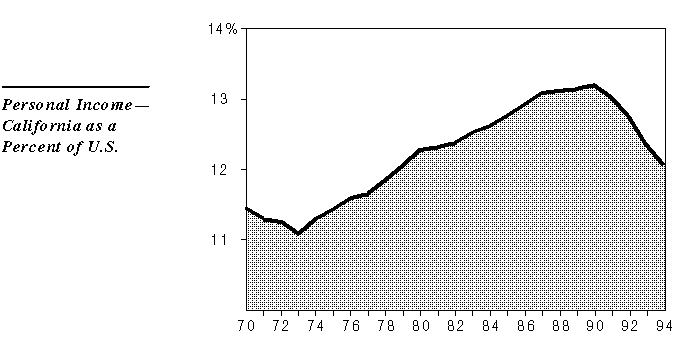
The basic well-being of a state's population is in part related to its income levels.
Income levels, for example, can be reflective of the types of job opportunities available in a state, and influence the amounts and types of goods and services that people can afford. Income levels, however, also can reflect regional differences in living costs, including how expensive it is to purchase such things as homes. In general, however, higher average income levels tend to be associated with higher living standards.
The figure shows that the 1993 per capita disposable income of Californians was nearly $19,100, or about 5.2 percent above the national average.
There were 12 states with higher per capita disposable incomes than California, mostly located in New England and the Mid-Atlantic region. Six years ago, eight states ranked above California. Thus, the state has recently lost some of its relative income advantage, although its per capita income is still above-average.
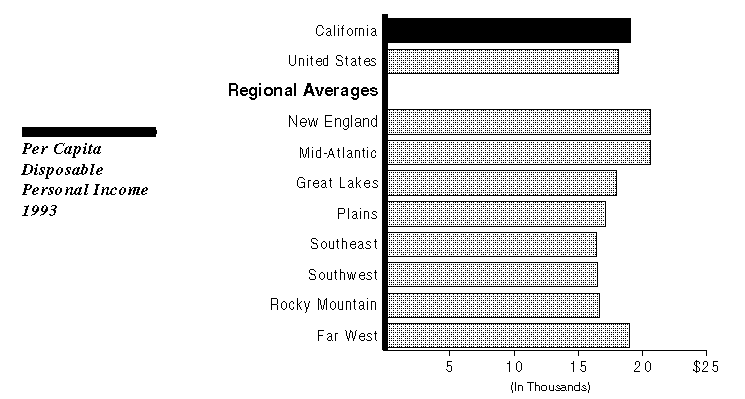
California is noted for having one of the most diversified economies in the nation--in fact, in the world. This is a great advantage, because it means that California's economic fortunes are not entirely dependent on how one or a very few industries perform. As a result, California's economy has traditionally been less volatile than most. Without this diversification, California's economic performance during the most recent recession would have been even worse than it was.
Californians are employed in over 120 separate industries. The figure shows that these industries can be grouped into seven broad sectors. In 1993, the four largest sectors accounted for over 80 percent of all jobs.
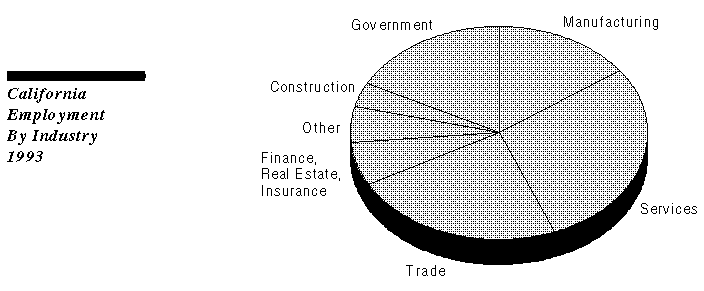
Over the past several decades, California's industrial mix has steadily been shifting away from manufacturing and toward services and trade. This in part reflects the growth of California as a center for financial services and high-tech activities that bring with them demands for highly trained service personnel. Another factor has been California's key role in Pacific Rim trading activity, which has been expanding in recent years.
The California economy added about 1.1 million jobs over the past eight years. The figure shows that, of this gain:
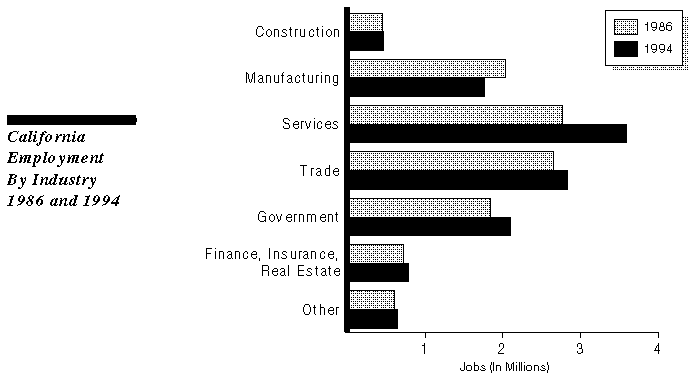
From the mid-1970s up to the 1990's recession, California's economy generally outperformed the nation's, often by considerable margins. This can be seen in two popular indicators of economic performance--personal income and employment growth.

California's relatively stronger performance during this period was due to a variety of factors. These included strong federal defense spending, strength in high- tech manufacturing and commercial aerospace activity, growth in the financial sector, a strong housing sector, and expanding foreign trade.
In contrast to generally outperforming the nation during the 1970s and 1980s, California's economy has performed worse than the nation's thus far in the 1990s. California's recession was worse, and its economic recovery began later and has been weaker, than the nation's.
For example, personal income growth from 1990 to 1994 for the nation was 22 percent (5.2 percent annually), compared to 12 percent (2.8 percent annually) for California. Thus, California's income growth was only about half the nation's.
California also had significantly fewer jobs in 1994 than in 1990, compared to a 4 percent increase for the nation. California lost many jobs within the manufacturing sector, mostly relating to cutbacks in aerospace jobs due to the decline in federal defense spending.
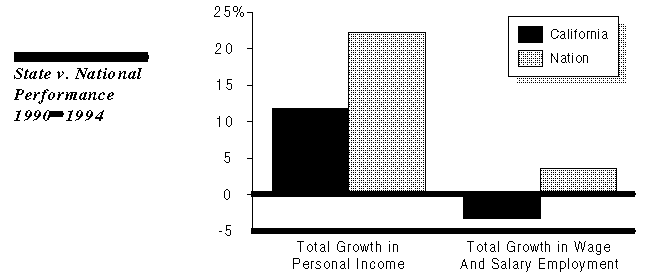
California's relatively worse recession and weaker recovery contrasts with what occurred in the previous recession, when the state did better than the nation. For example, the significant job losses which occurred nationally in the early 1980s did not occur to as great an extent in California.
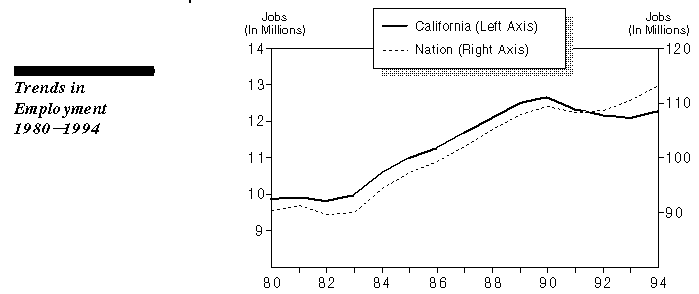
Unemployment rates provide striking evidence of the most recent recession's relative severity in California. During the 1980s, the nation's and California's unemployment rates moved closely together. In contrast, over the past four years California's rate rose by much more and for a longer period, and subsequently declined by much less, than the nation's. The state's rate currently is about 2 percentage points higher than the nation's.
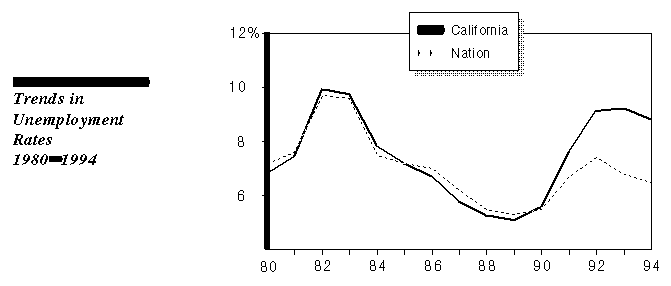
Although direct employment in the construction sector accounts for only about 4 percent of all jobs in California, its impact on the economy is much greater. This is because construction activity gives rise to economic activity in many other sectors of the economy, such as the manufacturing of equipment and building materials, and various service and trade-related activities.
Housing construction was especially hard hit by the recession. New residential building permits fell to only 85,000 in 1993, the lowest in over 25 years on a per capita basis. By comparison, new residential building permits averaged about 210,000 during the 1970s and 1980s, and peaked at over 300,000 in 1986.
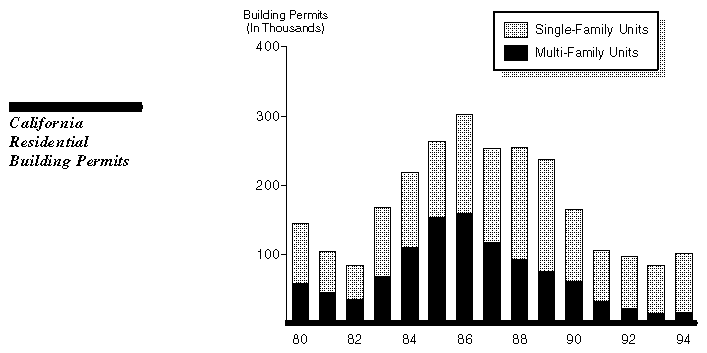
Multi-family building permits have been in a sharp decline ever since 1986, partly due to basic economic factors and partly due to past tax law changes which reduced the investment return on multi-family housing. Multi-family building permits are currently only about one-fourth their 1990 level and one-tenth their 1986 level. The timing and strength of a rebound will depend on future interest rates and the pace of California's economic recovery.
Federal defense spending as a share of the California economy reached a peak in the late 1960s at nearly 14 percent, sharply declined during the 1970s, and then partially rebounded through the mid-1980s. Since that time, however, defense spending in California has again sharply declined as a percent of the state's economy.
Although the decline in the 1970s was sharper, it was offset to a greater degree by strength in other sectors of the economy than has been the case currently. Thus, declining defense spending has been a major drag on the state's economic performance.
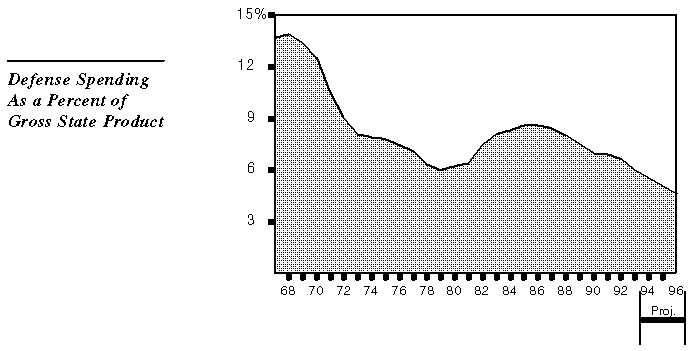
The recent cuts in federal defense spending have triggered major cutbacks in related employment areas, especially aerospace. The number of aerospace jobs in California has been declining since 1986. However, the decline has been most severe since 1990. There were 337,000 aerospace jobs in 1990 compared to 191,000 in 1994, a decline of nearly 45 percent. Additional job losses will be occurring in future years as federal cutbacks continue and work their way into the state's economy.
